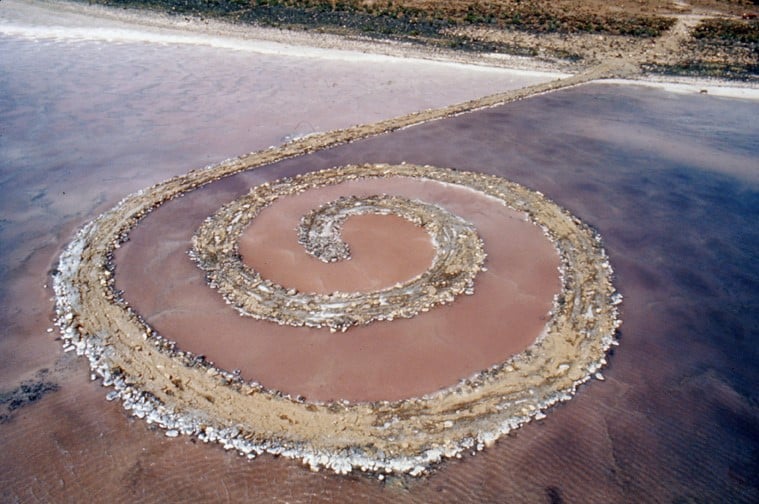Law & Politics
Iconic ‘Spiral Jetty’ Voted Utah’s Official State Work of Land Art
It was a good week for art in Utah, according to lawmakers.

It was a good week for art in Utah, according to lawmakers.

Eileen Kinsella

Last week, both the Utah House and Utah Senate voted to approve Robert Smithson’s seminal land artwork Spiral Jetty (1970) as the state work of land art. Utah lawmakers also recognized various ancient rock art locations throughout the state as official state works of art.
In an email to artnet News after the House passed the HB211 bill last week (the Senate approved it March 10), Representative Becky Edwards (R-North Salt Lake), wrote: “The Spiral Jetty bill was passed! And the Senate bill designating Native American rock art was also passed. A good session for cultural arts in Utah.”
According to an informational pamphlet released by the house, Spiral Jetty is internationally recognized as one of the best examples of land art in the world. In 2015, Spiral Jetty drew 3,768 visitors.
The artwork, created in 1970 by Smithson, is 1,500 feet long and 15 feet wide. The counterclockwise spiral juts out of Rozel Point peninsula on the northeastern shore of Great Salt Lake. Smithson used over six thousand tons of black basalt rocks and earth from the site. In 1999, the artwork was donated to New York’s Dia Art Foundation by Smithson’s wife, artist Nancy Holt, and his estate.

Robert Smithson, Spiral Jetty (1970). Courtesy of Soren Harward via Wikimedia Commons.
According to a report in the Salt Lake Tribune, the bill’s Senate sponsor, Senator Peter Knudson (R-Brigham City), called the work an “amazing structure.” He urged his Senate colleagues to not only support the bill, but also to visit Spiral Jetty. “When the lake is dry, you can walk out there and experience the artwork. The point is for you to become part of the art,” Knudson said.
Representative Christine Watkins (R-Price), House sponsor of the rock art bill, told the Tribune that Utah has some of the oldest rock art in America, including its only authentic ice age art: two panels near Bluff depicting mammoths. “They are at least 12,500 calendar years old, [proving] the co-existence between paleo Americans and ice age [plants and animals]. This alone makes Utah one of the most important rock art theaters in the Western hemisphere,” said Watkins.
The Senate voted 23–3 on March 10 to pass HB211. The House voted 57–12 on Wednesday (March 8) to pass SB171 for the rock art. Minor amendments in the Senate on HB211 require a concurring vote in the House before both bills go to Governor Gary Herbert, according to the Tribune.
Smithson created the work when water levels were particularly low and Spiral Jetty was subsequently submerged in 1972. Droughts caused the lake to recede in 2002, and the sculpture has remained visible ever since, according to the Dia website.
“I like landscapes that suggest prehistory,” Smithson once said. The landscape, changing water levels, and the salinity of the lake “speak of the artist’s preoccupation with the concept of entropy, ” according to Dia. The artist envisioned “an artwork in a state of constant transformation whose form is never fixed and undergoes decay from the moment of its creation.”